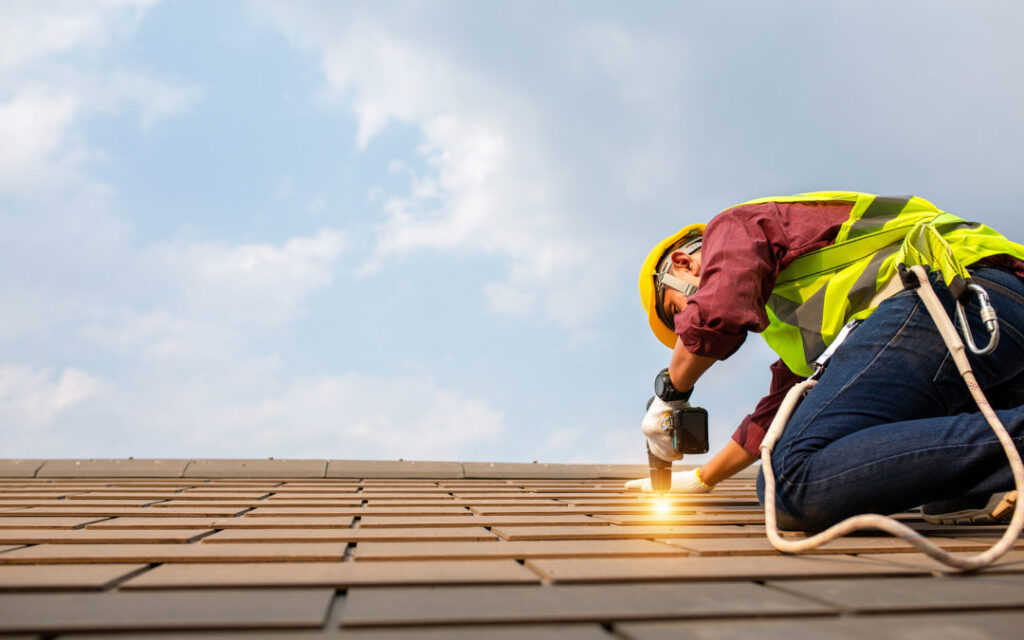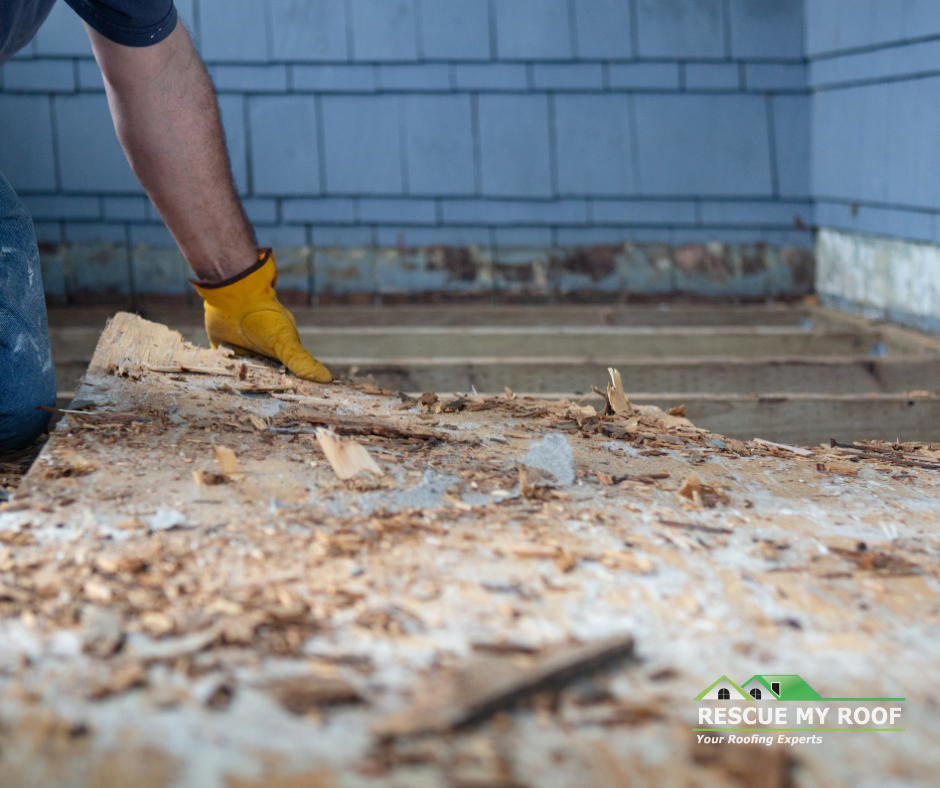Can There Be Damage During a Roof Replacement? (Causes, Prevention, & More)

A roof replacement is a significant investment for homeowners, often undertaken to enhance the safety, aesthetics, and longevity of their property. However, the process of replacing a roof can be complex and may raise concerns about potential damage to the home.
If you’re dealing with an old or leaking roof, and making a significant financial investment, the last thing you want to deal with is damage to your home after a roof replacement.
But, unfortunately, there are risks to the roof replacement process. So is it normal to anticipate damage during a roof replacement?
For over a decade, Rescue My Roof has been a leader in the roofing industry, helping homeowners keep their homes and families safe for a lifetime. We’ve replaced hundreds of roofs throughout southeastern Wisconsin.
Today, we’re here to help you understand what goes into the roof replacement process and what to expect.
In this article, we’ll explore the common types of damage homeowners can expect during a roof replacement and how to mitigate risks throughout the process.
What Happens During A Roof Replacement?
Before delving into potential damage, it’s essential to understand the typical steps involved in a roof replacement:

- Initial Inspection: A professional roofing contractor will conduct a thorough inspection of the existing roof to assess its condition and identify any issues that need addressing.
- Preparation: The area surrounding the home will be prepared for the roof replacement, including protecting landscaping, removing debris, and setting up equipment.
- Tear-Off: The old roofing materials will be removed, exposing the roof deck for inspection and repairs.
- Repair or Replacement of Decking: Any damaged or deteriorated roof decking will be repaired or replaced to ensure a solid foundation for the new roof.
- Installation of Underlayment and Flashing: Waterproof underlayment and flashing will be installed to provide added protection against water infiltration.
- Installation of New Roofing Materials: The new roofing materials, such as shingles or tiles, will be installed according to manufacturer specifications and industry best practices.
- Cleanup and Inspection: The work area will be thoroughly cleaned, and a final inspection will be conducted to ensure the roof replacement meets quality standards.
Common Types of Damage During a Roof Replacement
Reputable roofing companies should leave you without any worries. However, sometimes the roof removal process can reveal more underlying issues roofing professionals couldn’t predict. Here are some common issues that pop up during a roof replacement:

- Decking Damage – During the tear-off phase, existing roof decking may be damaged or deteriorated, especially if underlying issues were not previously addressed.
- Structural Damage – In some cases, structural damage may be uncovered during the roof replacement process, such as rot or termite damage in the roof framing.
- Water Damage – If the roof has been leaking or compromised, water damage to interior ceilings, walls, and insulation may become apparent during the tear-off phase.
- Landscaping Damage – Heavy equipment and foot traffic around the home during the roof replacement process can lead to damage to landscaping, such as crushed plants or torn grass.
If the roof removal reveals more damage, you will be contacted by the foreman or project manager to discuss the next steps and any changes to the budget.
If the roofing company is at fault for issues like damaged landscaping or siding, they are responsible for repairing those damages unless there are provisions in your contract. Always read paperwork thoroughly and communicate with your contractor to make sure you are protected in case of damage.
How to Prevent Damage and Mitigate Risks
If you want your roof replacement to go off without a hitch, here are some steps you can follow:
- Pre-Installation Inspection: Conduct a thorough inspection of the home’s interior and exterior before the roof replacement to identify existing damage and address any potential issues proactively.
- Communication with Contractors: Maintain open communication with the roofing contractor throughout the process to address any concerns or questions and ensure that proper precautions are taken to minimize damage.
- Protective Measures: Implement protective measures, such as covering landscaping and fragile items, to minimize the risk of damage during the roof replacement process.
- Quality Workmanship: Choose a reputable roofing contractor with a track record of quality workmanship and attention to detail to minimize the risk of damage and ensure a successful roof replacement.
Finding A Reputable Contractor
While a roof replacement can be a disruptive process, homeowners can take proactive steps to mitigate risks and minimize damage. By understanding the common types of damage that may occur during a roof replacement and working closely with experienced roofing professionals, homeowners can navigate the process with confidence and ensure a successful outcome that enhances the safety, durability, and value of their home.
Additionally, choosing a reputable contractor is key to ensuring your home’s safety. Read “9 Questions You Should Ask Before Hiring A Roofing Contractor” and “10 Qualities To Look For in A Roofing Contractor” to learn more.
If you’re looking for a reputable roofing contractor in southeastern Wisconsin, you’ve come to the right place. Rescue My Roof is a platinum-level certified Atlas roofing contractor. Contact us today to get a free estimate.


